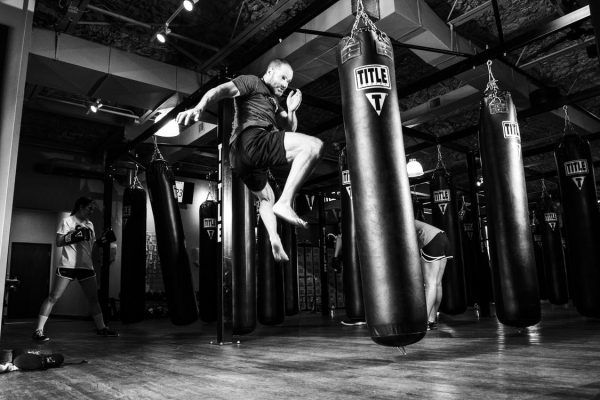Resilience
Building Up Your Resilience Muscle
Resilience is the ability to bounce back from a challenging event.
Posted November 16, 2017
Gary Blackledge, MS CSCS® (Certified Strength and Conditioning Specialist®), a top-level trainer at my gym, talks extensively during training sessions about goals, resistance points and action steps to work on improving health. Despite how closely we aim to follow guidelines on improving our lives, injuries happen, conflicting schedules cause lack of follow through, or sometimes there is a period where inertia simply takes over. I spoke with Gary about his thoughts on resilience and how he approaches the challenges that happen in everyday life with his clients.
Here are his thoughts:
What is resilience?
To me, resilience is the ability to bounce back from a challenging event or overcome a series of obstacles that have gotten in the way of an individual achieving their goals.
Where does resilience come from?
I believe that resilience and mindset have a strong connection. Psychologists have studied the difference between “fixed mindset” and “growth mindset”, and how these affect one’s ability to achieve success. Those with a “fixed mindset” tend to avoid challenges, give up easily, and ignore useful negative feedback. On the contrary, individuals who possess a more “growth mindset” have been shown to embrace challenges, persist in the face of adversity, and learn from criticism. It is easy to see how those who possess more of a “growth mindset” will be more likely to carry traits of resiliency and bounce back from challenging events more effectively.

Why is resilience important?
Resiliency is extremely important because obstacles will always arise in an effort to derail you from your goals. For example, I am a health coach and my job is to help clients achieve their fitness goals. Some of these include increasing strength, losing weight, improving athletic performance, and getting off medication. No matter what the goal is, I am confident in my abilities to design a well-researched, high-level program to help them get there. However, implementing this program is another story. Some clients have young children to take care of, while others have most of their time consumed by work and travel. While children, work, and travel all demand unique attention, none of them allow my clients to spend more time in the gym working on their health and wellness. Hence, these variables, while very important in life, are often obstacles that get in the way of one achieving their goals.
I would be remiss in my coaching duties to allow my clients to continue to let these variables derail them from making themselves healthier. Therefore, we plan around these other demands in search of what we like to call, “areas of opportunity”. Many people tend to dwell on all of the time they don’t have to exercise or prepare food (fixed mindset) as opposed to the time that they do have (growth mindset). Part of my job is to help my client identify areas of opportunity for them to commit to their health and wellness goals. Once we identify this, we can set up an action plan to implement their program in a more manageable and realistic fashion.
How do we build resilience?
The best way to build resiliency is to plan. I alluded to some planning techniques that I use above, but these can be carried over to other areas of life. Overcoming obstacles and challenges become exponentially easier and more realistic when there is already an action plan in place. Think about how difficult it could be to have the desire to go to the gym after a long day of work, or after your child threw a fit because they didn’t want to get ready for school. One action plan to set in place can be to book appointments for your gym sessions. Whether it is meeting your health coach for a personal training session or meeting a friend for a group fitness class, committing to an appointment (and/or to another individual) will often build adherence and dedication.”
How can we increase our awareness and ability?
I think increasing awareness and ability is a multiple-step process:
- Establish your goal
- Identify the necessary steps to make that goal happen
- Diagnose potential roadblocks or obstacles that may arise
- Create an action plan to maximize the necessary steps and minimize potential roadblocks/obstacles
- Implement the action plan
List 1-3 things the reader can do now.
- Think about what you would like to accomplish to improve your health and well-being. This can be exercise, nutrition, sleep, and/or mindset related.
- Reflect on why this goal is meaningful and important to you. Write it down and have a way to track adherence.
- Follow the steps above to create an action plan for accomplishing this goal.
When life presents unexpected and unwanted challenges, having considered the road back to normalcy in advance is your best bet. Developing a resilient muscle memory component adds to your capability to handle whatever life presents with confidence. After all, isn’t that what we all want? Thank you, Gary!


